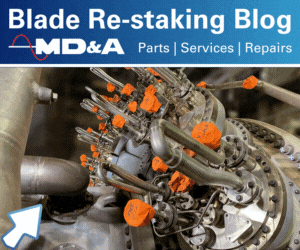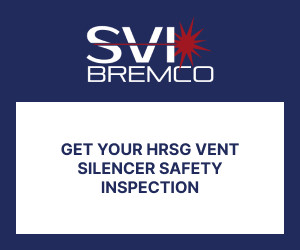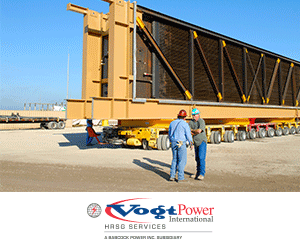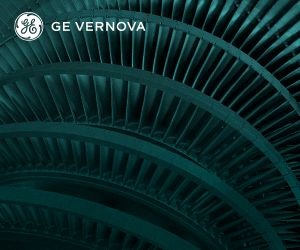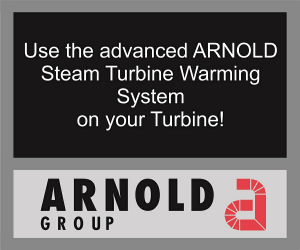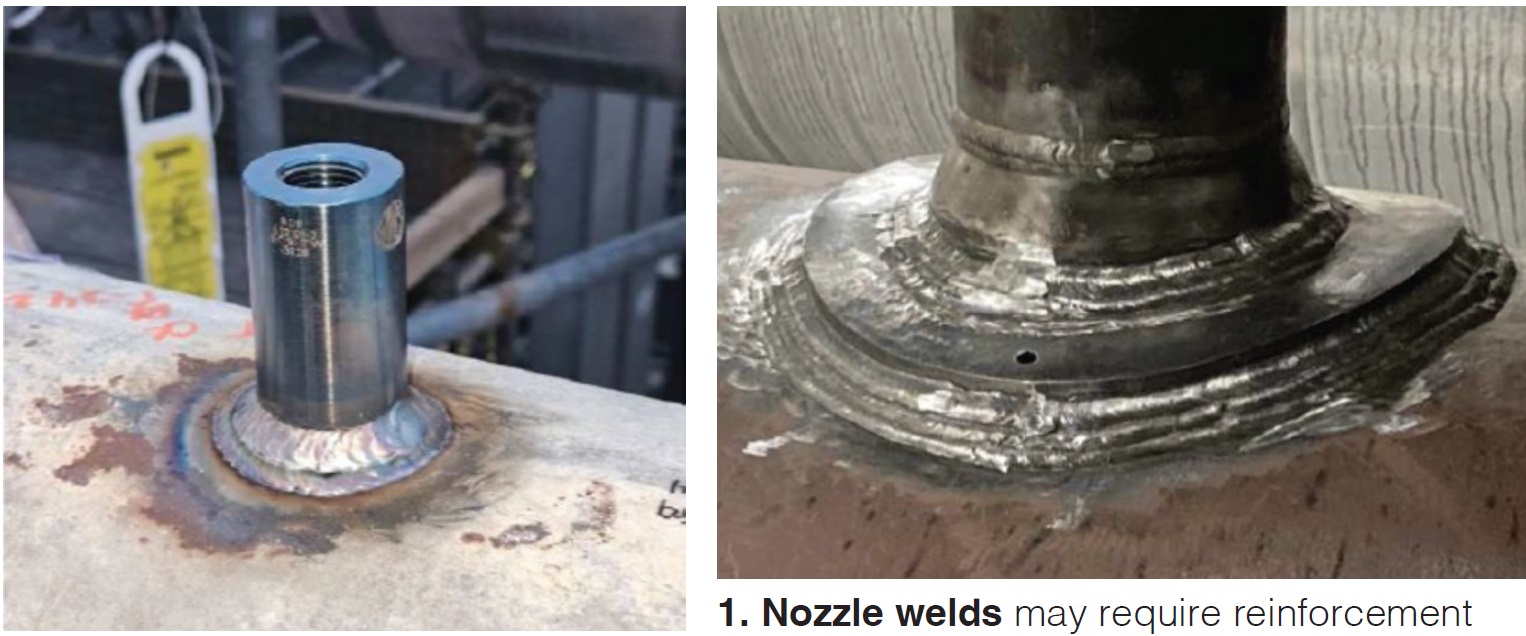 By Vignesh Bala, Vogt Power
By Vignesh Bala, Vogt Power
Editor’s note: This is the second of three articles exploring the impacts of gas-turbine upgrades on heat-recovery steam generators. It focuses on “re-rating” of the HRSG after the upgrade to extract maximum benefit from the work. Part 1, which examined the driving factors behind GT upgrades, appeared in August. Part 3, next issue, will address implementing HRSG mods onsite and the associated planning considerations. Goal of the series is to make your plant more economical and efficient while gaining flexibility to adapt to changes in load demand.
Gas-turbine upgrade packages can vary significantly in terms of the benefits. Most OEMs and third-party providers offer several tiers of upgrades and modes of operation within each tier. The higher-tier packages often come with sizable increases in peak performance accompanied by greater changes in exhaust-gas flows and temperatures. Upgrade tiers are designed to fit the operator’s requirements considering load demand, operational needs, and budget.
Conventional approach. Historically, managing significant increases in exhaust-gas flows and temperatures was straightforward, although not the most accurate approach. A thermal model of the HRSG was created using original design data, and new GT upgrade conditions were input into the model. Then you calculated new steam pressures using a KN factor relationship. It assumed the steam turbine was a constant-volume device, allowing for approximations based on new steam flows and temperatures.
Subsequently, the new operating pressures and temperatures of all HRSG pressure parts were computed. Increases in operating pressures were only a concern if they exceeded the weeping tolerance of safety relief valves, as defined by the ASME Boiler and Pressure Vessel Code (sidebar).
If the new operating cases were infringing on the weeping tolerance of the safety relief valves, this would not be permissible. If the condition persisted when supplemental firing was used, a burner runback would be recommended. If it was happening in an unfired condition, then a GT runback would be recommended such that the maximum operating pressures were just below the weeping-tolerance pressure of the valves. While this conventional approach complies with the Code and design practices, it limits the plant’s ability to fully benefit from a gas-turbine upgrade. For example, GT or burner runbacks reduce the plant’s overall capacity.
Today, the engineering and design capabilities are available to accommodate these constraints and maximize plant performance.
New approach to HRSG re-rates
Re-rating an HRSG to realize the full potential of a GT upgrade is not a straightforward process. Certain high-pressure (HP) components can be re-rated while others will perhaps require replacement. This process starts with a study to identify the system and component limitations.
Thermal analysis. The process of re-rating HRSG systems or components starts with a detailed thermal analysis. New exhaust-gas flows and temperatures from the GT upgrade are input into the HRSG model and the KN factor relationship is used to obtain the new design pressures for all HRSG pressure parts. All systems having a new design pressure higher than the existing pressure are identified. Since the thermal analysis is used to determine the new design pressures of the components, it is critical that the maximum performance conditions and other factors—such as steam augmentation, power augmentation, inlet chilling, etc—are considered and modeled.
Mechanical analysis. Once the updated design pressures for the systems are established, mechanical code calculations must be performed on each component. This includes all tubes, headers, end plates, drums, piping, branch connections, valves, thermowells, and welds.
Keep in mind that major pressure parts sometimes pass the mechanical calculations but attachment welds do not. For example, in a recent re-rate by Vogt Power, the drum shell and head passed Code calculations under the new pressures, but the nozzle welds did not and required reinforcement weld pads (Fig 1).
The mechanical analysis must follow the most recent Code year, because legacy codes and stress values cannot be used. This is particularly important for Grade 91 components, as allowable stress values have been reduced significantly in recent years.
Miscellaneous components. Following current codes instead of legacy codes when re-rating systems has broader impacts. For example, plants built in the early 2000s, and earlier, typically had a 2-in. drain pot downstream of the attemperator spray piping.
However, the latest pressurized (P) HRSG Code requires drain pots to be one nominal pipe size smaller than the piping they are installed in, up to a drain-pot size of 12 in. Therefore, if the HP steam or RH systems are being re-rated, new and larger drain pots must be installed to comply with PHRSG requirements.
Additionally, the safety valves of the re-rated systems must be replaced or have their springs reset to match the new system pressure. Capacity of the safety valves also must be considered because higher steam flows dictated the re-rate.
Similarly, the steam separation capacity of the drum internals must be verified to ensure there is no increased risk of moisture carryover from the drums (Fig 2).
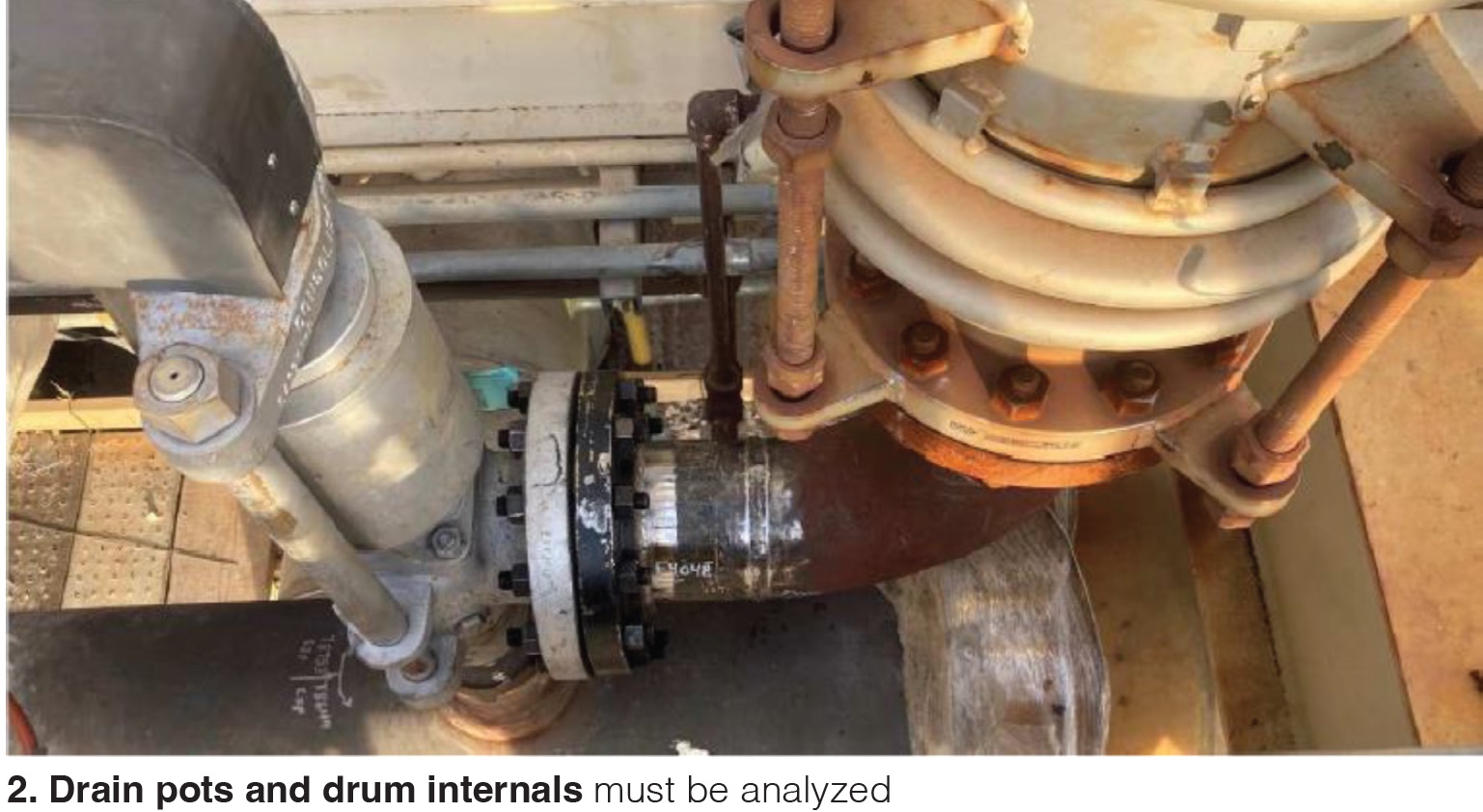
Weeping tolerance of safety relief valves
The most common cause of a pressure relief valve failing to open at the set pressure is the accumulation of corrosive deposits between the valve disc and seat. According to the 2019 edition of the ASME Boiler and Pressure Vessel Code, paragraph 103.1.3 (p 41), this usually happens when the pressure relief valve “weeps” or leaks slightly. To help overcome this condition, the system operating pressure should be lower than the set pressure of the relief valve, with minimum differentials recommended as follows:
Boiler design pressure, psig Min differential as a percentage of boiler design pressure Over 15 to 300 10% but not less than 7 psi Over 300 to 1000 7% but not less than 30 psi Over 1000 to 2000 5% but not less than 70 psi Over 2000 Designers judgment (Vogt uses 5%)
Other re-rating considerations. The mechanical Code calculations described above form the foundation of the re-rating process. These calculations assume that the components are new and clean. However, plants that have been in operation for several decades may experience degradation of their pressure parts.
Therefore, additional due diligence is necessary to ensure these components are suitable for use at higher pressures. Since clear rules regarding this have not yet been established, it is crucial to involve the State Authorized Inspector, and the R-stamp holder performing the re-rate, early in the process.
In a recent project, the following due-diligence process was used by Vogt Power:
- Make mechanical Code calculations showing the components pass under the new pressures based on new and clean condition.
- Ultrasonically test components to quantify degradation from new-and-clean conditions and verify their current state. The testing should be performed on a representative sample of tubes, piping, elbows, and branch connections. Locations that are likely to experience degradation (such as regions prone to flow-accelerated corrosion) are selected for testing.
- Build a pipe stress model and run it on the components being re-rated.
- Assure 100% NDE of all new field welds.
- Conduct a field hydrotest at 80% of the new maximum allowable working pressure.
Conclusion. This article focused on the considerations for an HRSG system during the re-rate process. In Part 1, the author suggested involving HRSG engineers early in GT upgrade planning for best results. Each plant will offer unique challenges to overcome; however, your HRSG does not have to be a limiting factor during a GT upgrade. The third and final article in this series will discuss onsite planning considerations, as well as best practices during the construction phase of the upgrade.
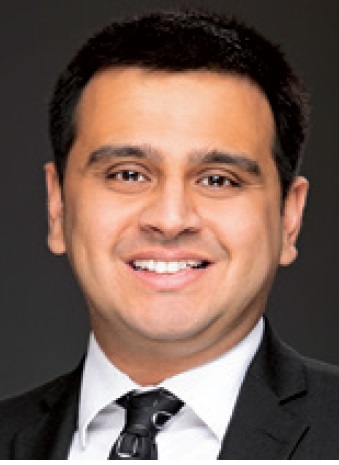 About the author
About the author
Vignesh Bala is VP HRSG Services at Vogt Power, a Babcock Power Inc company. He leads a group providing cutting-edge analysis and retrofit solutions for combined-cycle powerplants to increase capacity and reliability in support of a changing power market. Bala and his team conduct studies, inspections, and turnkey retrofits, and provide parts for HRSGs manufactured by all OEMs.



